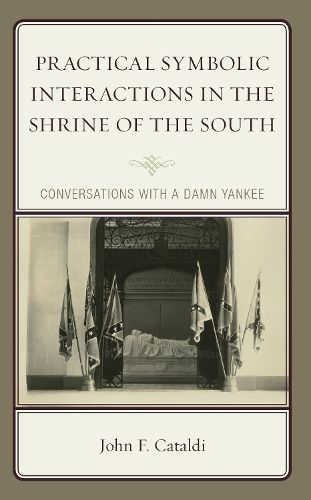Readings Newsletter
Become a Readings Member to make your shopping experience even easier.
Sign in or sign up for free!
You’re not far away from qualifying for FREE standard shipping within Australia
You’ve qualified for FREE standard shipping within Australia
The cart is loading…






Practical Symbolic Interactions in the Shrine of the South: Conversations with a Damn Yankee finds that Lexington-Rockbridge, VA, community sentiments towards Southern symbols such as the Confederate Battle Flag and Robert E. Lee are not necessarily reducible to a racial divide. John F. Cataldi uses data to demonstrate that most black and white respondents navigate a social balance between the extremes of conservation and progress as a way to productively coexist and unify as a community rather than maintain an insular posture or cause division based solely on symbolic ideology. These forbearing folks seek ways to find common ground through pleasant and productive interaction.
These findings challenge conventional sociological and media-provided paradigms and broaden the discussion of what tolerance and situational context mean for a large spectrum of community members who live in the milieu of Confederate symbols every day. Cataldi suggests that contention over Southern symbols is intensified by the few who are clustered at the ideological extremes, but the controversy may be overrepresented as being a social problem for the many in the middle.
$9.00 standard shipping within Australia
FREE standard shipping within Australia for orders over $100.00
Express & International shipping calculated at checkout
Practical Symbolic Interactions in the Shrine of the South: Conversations with a Damn Yankee finds that Lexington-Rockbridge, VA, community sentiments towards Southern symbols such as the Confederate Battle Flag and Robert E. Lee are not necessarily reducible to a racial divide. John F. Cataldi uses data to demonstrate that most black and white respondents navigate a social balance between the extremes of conservation and progress as a way to productively coexist and unify as a community rather than maintain an insular posture or cause division based solely on symbolic ideology. These forbearing folks seek ways to find common ground through pleasant and productive interaction.
These findings challenge conventional sociological and media-provided paradigms and broaden the discussion of what tolerance and situational context mean for a large spectrum of community members who live in the milieu of Confederate symbols every day. Cataldi suggests that contention over Southern symbols is intensified by the few who are clustered at the ideological extremes, but the controversy may be overrepresented as being a social problem for the many in the middle.